Town called Fountain Population: 24,500
Old name: Sisus
Market day: Sunday
Not so long ago the port town of Çeşme made a handy escape for weekending İzmirlis but was cut off from the rest of Turkey by the sprawling metropolis, which meant that many people hardly even noticed it was there until they wanted to take a ferry to Chios (Sakız Adasaı), or Brindisi or Bari in Italy. Now, though, partly as a result of nearby Alaçatı’s huge popularity, Çeşme too is experiencing boom times, especially in high season when the streets are crammed to overflowing and the hotels full to capacity.
Today’s Çeşme feels much bigger than it really is, with most visitors funnelled down to the main square, Cumhuriyet Meydanı, by the harbour along İnkilip Caddesi which is lined with shops and restaurants aimed at tourists. More upmarket dining and shopping can be found around the new marina which lies south of the main square.
The most unmissable sight is the huge 14th-century Genoese fort overlooking the harbour and with a striking statue of Cezayırlı (Algerian) Gazi Hasan Paşa (1714-90) with his pet lion in front of it (a similar statue of the same pair can be seen in Kasımpaşa in İstanbul).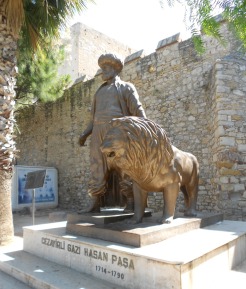
Otherwise Çeşme offers little in the way of organised sightseeing possibilities although it’s fun to roam the back streets behind the castle which retain many of their old houses in varying states of repair. Look out in particular for the many old fountains (çeşmes) after which the town is supposedly named.
For beach action all you need do is hop on one of the many buses heading for Boyalık and Ilıca, or for less built-up Altınkum. The main windsurfing beach is at Alaçatı, accessible by very frequent buses from Çeşme, although you will need to change there for a second less frequent bus to reach the beach.
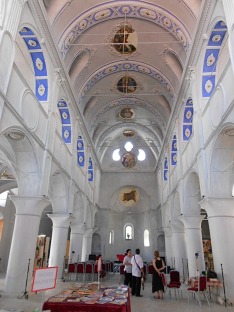 About town
About town
Walking down from the bus stops to the harbour you will pass on the left the enormous 19th-century Greek Orthodox church of Ayios Haralambos which has been very successfully converted into a culture centre-cum-exhibition space where there is almost always something going on. At the same time the church’s original frescoed ceiling has been beautifully maintained. If you can manage to catch a concert here it makes a wonderful venue. (The saint after whom the church is named is believed to have been a priest or bishop martyred for his faith in Antioch-ad-Psidia in 202.)
Arriving in the town square you will see several fine 19th-century properties on the lefthand side including what was once one of Çeşme’s oldest hotels, now abandoned.
By far the most important monument is the enormous fortress that dominates the main square. Of Genoese origin, it was rebuilt in 1508 by Sultan Beyazıd II who used it as a base to fight off pirates. Later it was occupied by the Knights of St John of Jerusalem, the same order that had been responsible for the Castle of St Peter in Bodrum. The views from the towers and ramparts are spectacular, and well worth the cost of an admission ticket.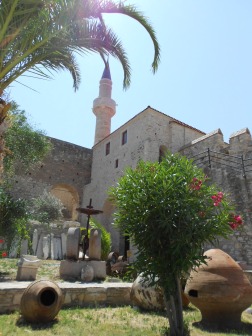
Today the fortress serves as a small museum that half-heartedly displays the finds from ancient Erythrae. It is more successful at explaining (in Turkish mainly) the terrible disaster that befell the Ottoman navy off Çeşme in 1770 when Cezayırlı Gazi Hasan Paşa was the only admiral able to steer his ships to safety during the course of a war with Russia. Afterwards, a new shipyard had to be set up in Bodrum to rebuild the fleet.
In its heyday the fortress was just the centrepiece of a complex of buildings that included the huge caravanserai commissioned in 1528 by Sultan Süleyman the Magnificent that now hosts a luxurious hotel.
Eating
Çeşme is well stocked with restaurants but most are aimed at tourists and some – especially those in Cumhuriyet Meydanı – overprice accordingly. More modern places are mainly to be found in the Marina but İmren Lokantası at the harbour end of İnkilip Caddesi, the main drag, has been in business for more than fifty years and does a great job of serving good quality, reasonably priced Turkish staples with a smile even at busy times. The garden at the back is a big plus in summer.
Sleeping
Çeşme is a seller’s market when it comes to accommodation, especially in high season when there are too few hotels to cater for demand. Expect to pay considerably more here than you would do elsewhere for the same facilities. There are, however, many small family-run pensions in the back streets behind the castle where prices come down to more manageable amounts.
Kanuni Kervansaray Historic Hotel
Transport info
There are regular flights from Istanbul and Ankara to Izmir, which is connected to Çeşme (72km) via a busy motorway.
There are also frequent bus services from İzmir to Çeşme. A few services leave from the main bus station; most from the western Üçkuyular terminal.
From Çeşme there are frequent buses to Alaçatı, Ilıca, Altınkum and Dalyan. The Altınkum services leave from near the tourist office in the town centre (on the sea side of the road opposite the castle), the others from near the big Adalet Sarayı (Palace of Justice) building which is also where the buses from İzmir drop passengers. This is also where you’ll find the stop for the timetabled bus service to Urla; it’s limited so check return times carefully.
Sunrise Lines, Makri Travel and Erturk operate ferries to Chios twice a day in summer and at other busy times. The crossing usually takes around half an hour. The ferry terminal is a short walk away from the castle.
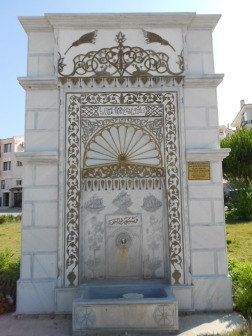 Restored fountain erected in 1683Day trip destinations
Restored fountain erected in 1683Day trip destinations
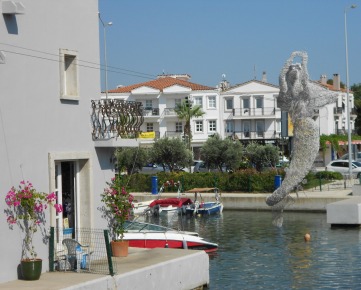 Çeşme Marina
Çeşme Marina
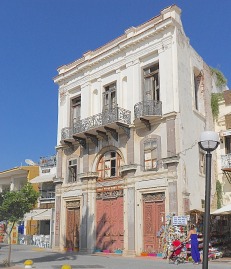 Old hotel awaiting new owner
Old hotel awaiting new owner


